Digging for Clues to the Planet’s Future in an Ancient Extinction
In January, I stood in a ditch in the middle of nowhere in South Africa, and the summer sun beat down as I stared at a heap of grape soda-colored rocks. Bob Gastaldo, the paleontologist whose research team I had been following through the Karoo, had his back turned and was busy striking these quarter-billion year-old rocks — residues of a mass extinction that caused about 70 percent of all land life and 96 percent of all marine life to vanish permanently — with his hammer.
The extinction has a few names. One of them is the Permian-Triassic (PT) mass extinction, for the two geologic periods it separates; another is the “Great Dying,” for all the life-ending change it caused. It is the biggest extinction of the so-called “Big Five” mass extinctions that punctuate the history of life on our planet, and, according to many researchers, one of the best places to see the PT land extinction as it exists in Earth’s many-layered rock record is in the Karoo, a vast, semidesert region of south-central South Africa.
Where I stood in that ditch, the extinction horizon — that is, the point where the rock layers go from Permian to Triassic in age — is supposed to be somewhere amid the rocks that were in front of me. If some of these rocks were gravestones, you would see names like Diictodon and Daptocephalus — names of land animals that missed the train to the Triassic. Near the ditch, Gastaldo had tripped over the fossil skull of what was probably a Lystrosaurus.
Other paleontologists, including Roger Smith of the Iziko South African Museum in Cape Town, believe the extinction of land animals suggested by these rocks coincided with a massive die-off of marine life. “It happened on land and it happened in the sea and it happened at the same time,” Smith told me. Then, as life reset itself, new species appear above the boundary.
According to this theory, the prime suspect behind the extinction was volcanism in what is today Siberia, where about 720,000 cubic miles of lava disgorged onto Earth’s surface for about 1 million years, leading to the extinction of ocean life over the course of about 60,000 years. The volcanoes let out lava, the thinking goes, but also climate-changing gases like carbon dioxide that likely warmed the planet. This all set off a cascade of fallout effects that annihilated most life — in the seas, and possibly on land, too.
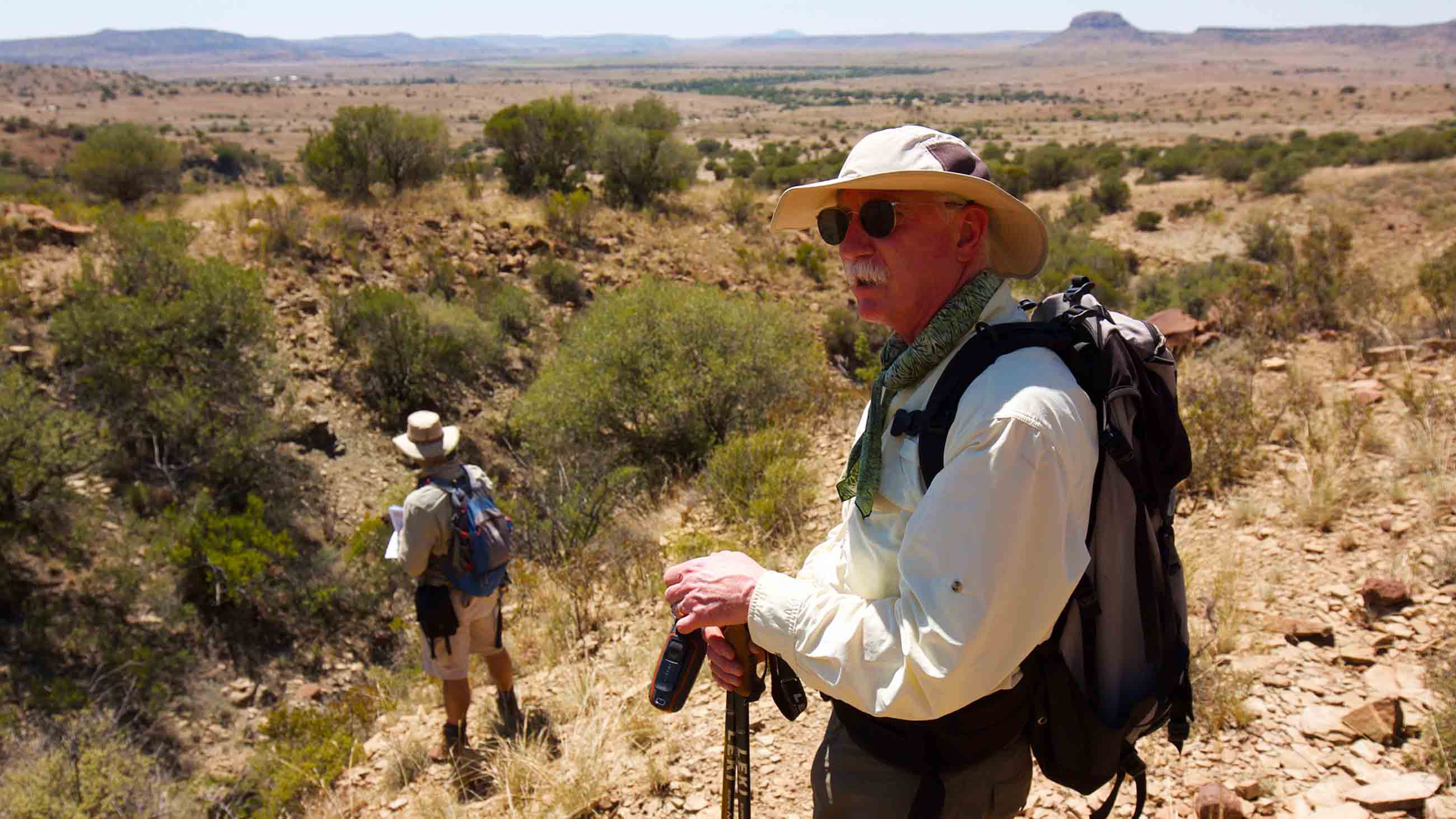
The problem is that while the volcanic onslaught corresponds well with that known extinction in the planet’s oceans, it is not clear to experts like Gastaldo, who works at Colby College in Maine, precisely when the land extinction happened. If the two extinctions did not happen at the same time, then some other extinction event could be behind the demise of species on land. But if the land event happened alongside the marine event, as Smith affirms, then volcano-made climate change is the most likely perpetrator.
The question matters greatly. Today, volcanism is no longer pumping so much carbon dioxide into the atmosphere, but humans most certainly are, and it’s helping to drive what many paleontologists are calling the sixth mass extinction of life, with the long list of victims including things like the once-common golden frog of Panama, and North America’s dwindling ash trees. By some accounts, the rate of species loss today has not been seen since the last of the non-avian dinosaurs perished about 66 million years ago.
If one main driver of the PT extinction on land was indeed climate change, then scientists can look to the event as an analogy for how our own homemade sixth extinction might unfold in our near and far futures. But if the trigger was something else, which may be the case if the land extinction did not happen at the same time as the marine extinction, then the analogy, at least for the land story, falls short.
“How much does it rhyme [with today]?” Gastaldo asked one night in our hotel in the small South African town of Bethulie.
That question, and the implications its answer may carry — profound ones that could reshape our modern political debate over climate change, extinctions, and humanity’s role in it all — are in large part why he and his team were exploring the rockscape around Bethulie. Each day for about 10 days, we drove through the town in two white pickups, past the site of an old concentration camp built by the British during the Boer War, and into the veld.
And Gastaldo’s team members, like sleuths, set out with their detecting skills in search of clues to a mystery that, for all its temporal distance, could very well tell us as much about our future as our past.
“Look over there,” Sandra Kamo whispered to me.
“What? I don’t see anything.”
“Right there, sitting on that rock.”
“I still don’t see it.”
Kamo pointed, and this time I saw it, and I screamed. Sitting on a rock was a grey lizard as big as a house cat, and it scurried like lightning toward a wild olive tree after hearing us.
I had been following Kamo, a geochronologist from the University of Toronto, while she followed rock layers around the extinction horizon. Among her most relevant skills on the Karoo team is that she can often tell you exactly how old a rock is. This is a powerful thing: if she can determine the absolute ages of these rocks, then the whole case could be solved, as it would be clear when the land extinction happened. But Kamo can only deduce the age of very specific kinds of rock, and the rock type she needs in the Karoo — ash from an ancient volcanic eruption — is as rare as a golden frog in Panama. “There was not a lot of volcanic activity in the latest Permian anywhere near here,” Kamo said.
But there was some: In 2015, she and the team published a date from one ash bed located nearly 200 feet below the supposed extinction horizon: It was roughly 253.5 million years old, the team reckoned — or more than one million years older than the age of the marine extinction. That would seem to imply that the land and the marine extinctions did not happen at the same time, but for a true slam dunk Kamo says she would need to date multiple ash layers from the rock strata around the extinction horizon to be absolutely certain of the layers’ true age range.
Depending on the answer, one could say that the age of the extinction horizon syncs with, or does not sync with, the age of the marine extinction. Smith, for instance, said that the date really helped his cause “by showing that this is very close to the Permian-Triassic boundary.”
To say for sure, though, researchers need more dates, with much hinging on the ash — and on the precise age of the rocks at Smith’s extinction horizon, which John Geissman, a geologist from the University of Texas at Dallas, spends a good deal of time in the Karoo turning into Swiss cheese with a high-powered drill.
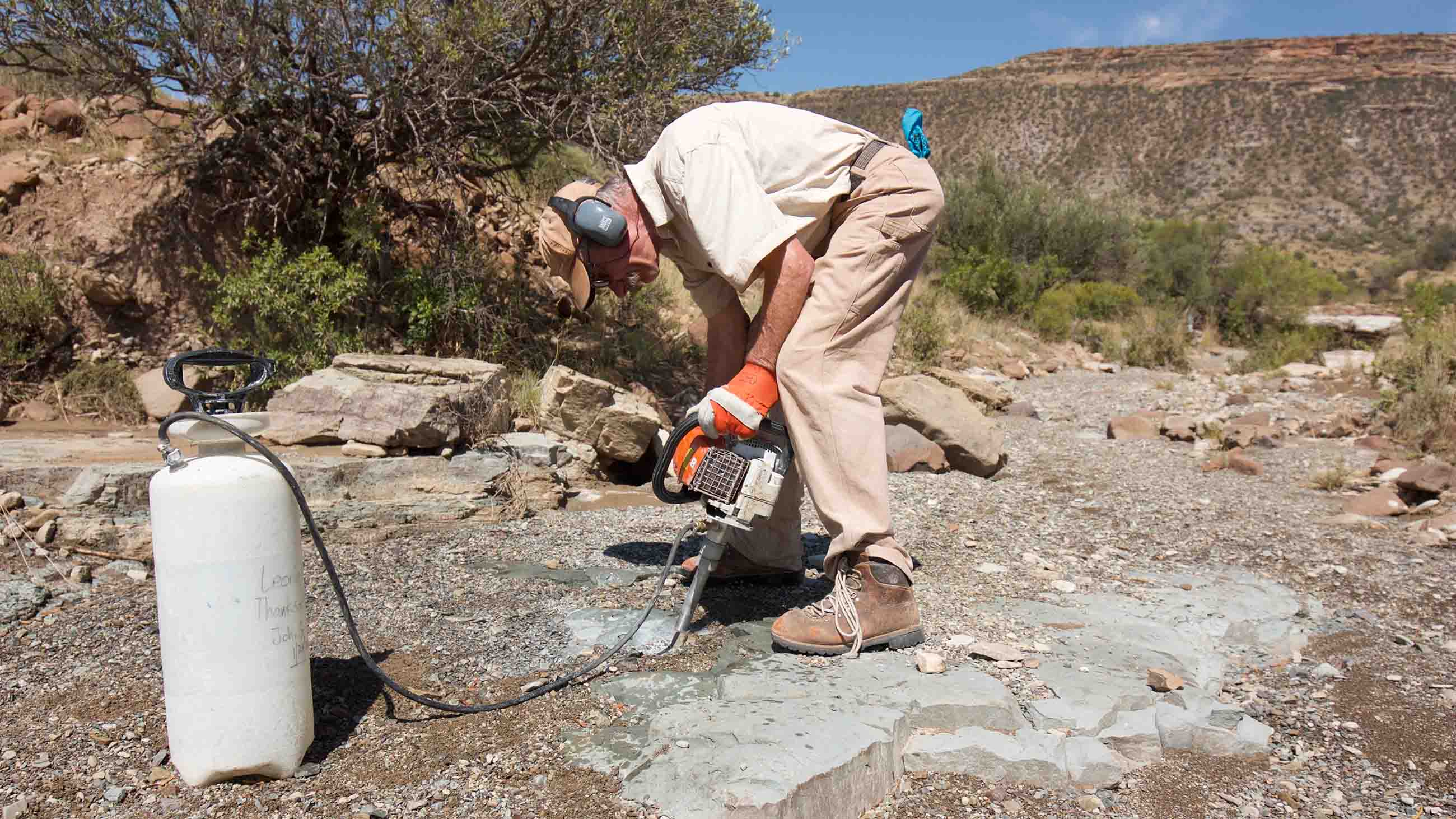
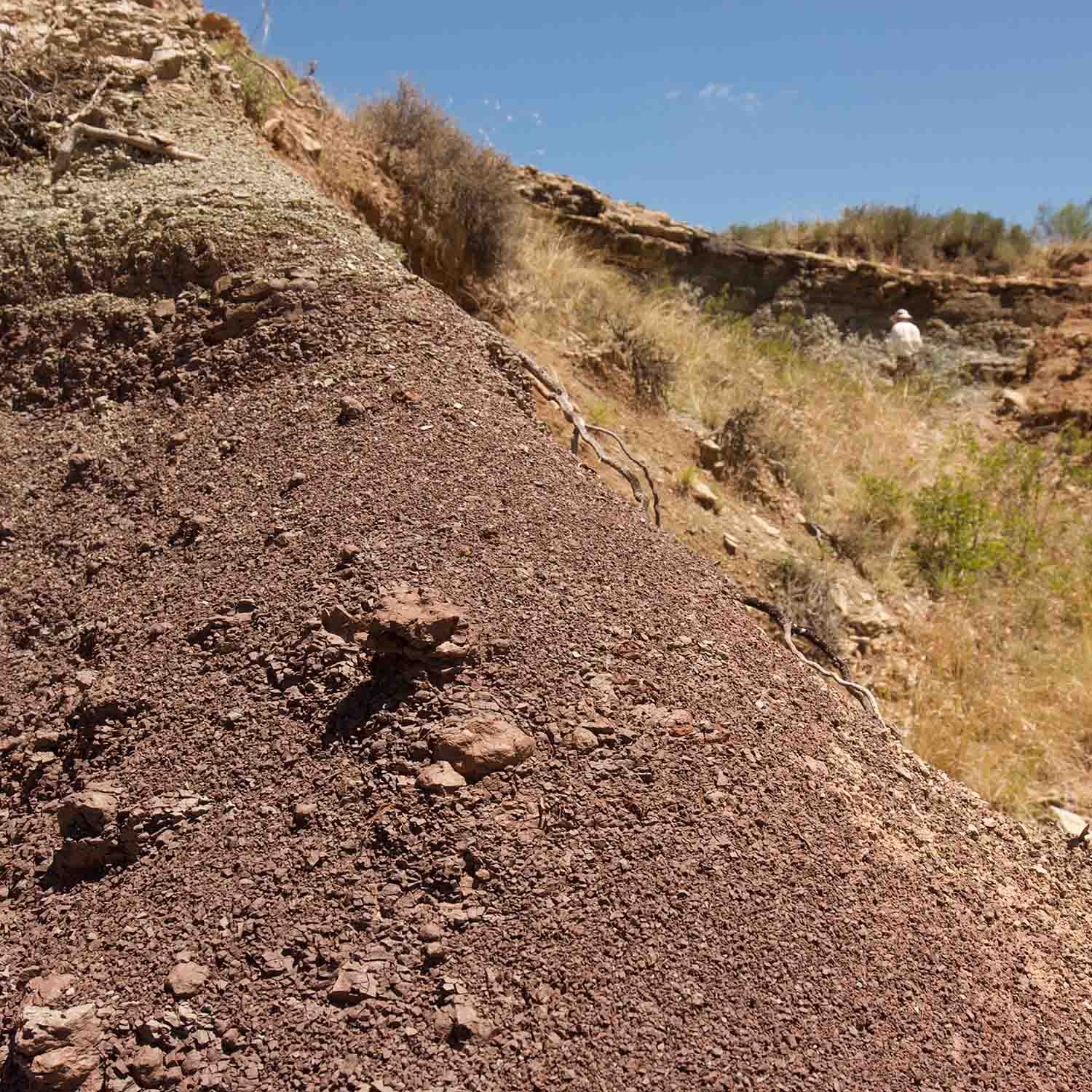
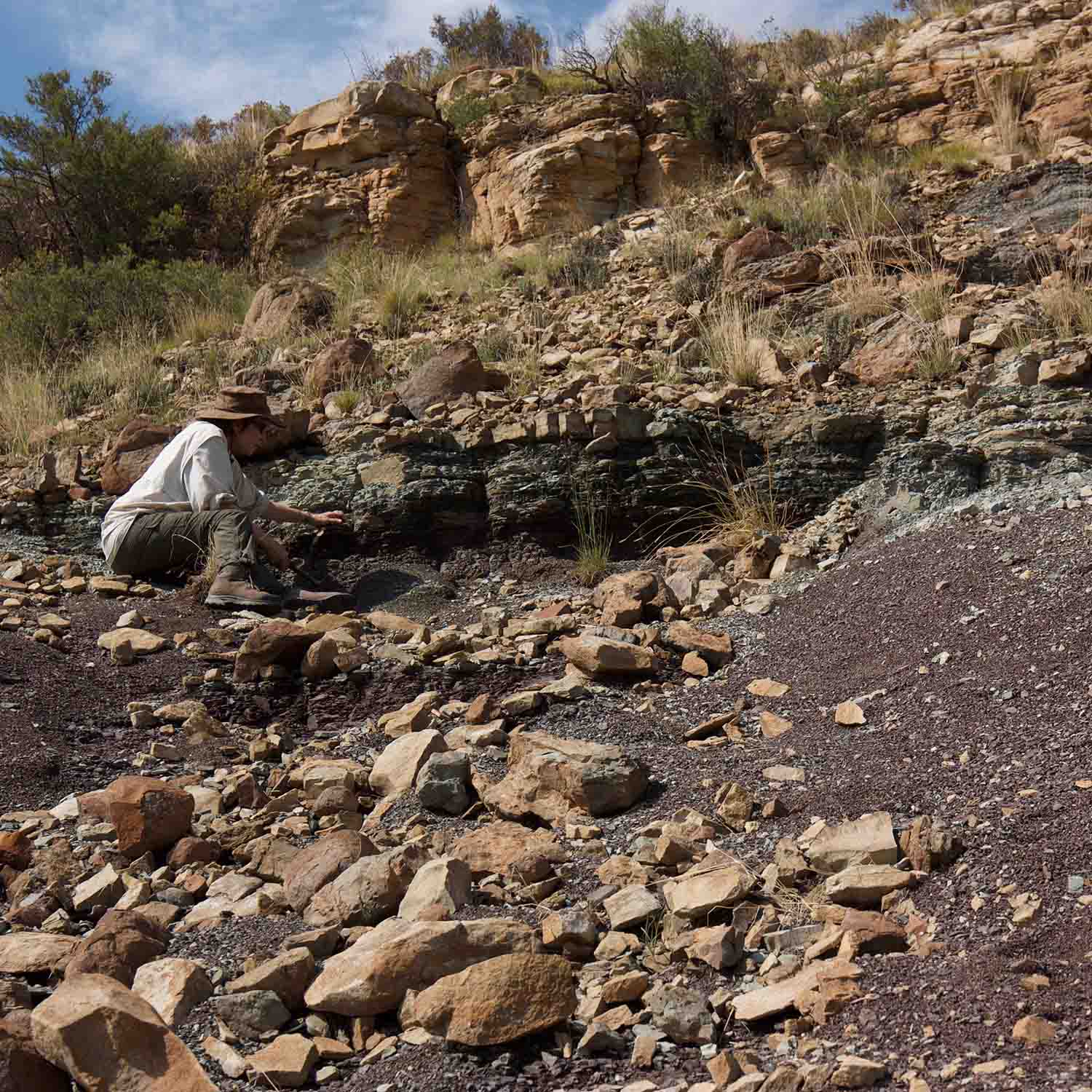
Geissman measures the magnetism of the rock samples he drills. He does this because, every so often in Earth’s deep past, the orientation of our magnetic field has flipped. North becomes south, and south becomes north. There’s a global record of these flips, and Geissman wants to see what the orientations of the magnetism in the rocks here are. If he can construct a complete record of the flips in the rocks at the field site, he may be able to match it to the global record and see just how old the rocks actually are. And, so far, the pattern seems to match the magnetic record of around 253 million years ago — older than the extinction by roughly a million years.
Still, without firm, absolute ages for the rocks — something magnetics cannot give — it is hard to say exactly where the flips fit into the global record.
“So, unless Sandra finds an ash bed…” I said to Geissman.
“That’s right,” he said.
“What if she doesn’t?”
“Well, then we’re limited.”
It’s those persistent limitations to the theory, rife with not-quite-definitive bits of evidence, that continue to animate debate among scientists about what the extinction event recorded in these rocks can really tell us about the planet’s troubled biography, and the chapters that human beings might now be writing. So long as discrepancies persist, extrapolating the extinction story in the Karoo to the scale of the whole planet will remain dubious. “Can we say the things about mass extinctions and climate change in the ancient Karoo that we do?” asked Johann Neveling, a paleontologist with South Africa’s Council for Geoscience, and a member of Gastaldo’s team. “We think not.”
Above all things, the main clue that there is a mass extinction recorded here is the fact that animal fossils appear to vanish from these rock layers. In a 2014 study, Smith and a colleague defined the land extinction based on the disappearances of many fossils from these rock layers.
But Gastaldo and Neveling, using Smith’s GPS coordinates for where those fossils were supposed to be, have had trouble locating them. Further, animals like Daptocephalus, thought to have gone the way of the dodo, seem to persist past Smith’s boundary. “If Permian-aged reptiles are found at the same stratigraphic horizon, and the same position or higher than supposedly Triassic … vertebrates, how can there be an extinction?” wondered Gastaldo.
Smith suggests that it could be the poor resolution of the GPS data: “On steep slopes, the error in GPS recording, and the subsequent error in plotting on to Google Earth can change the stratigraphic level by up to 10 meters up or down from its true position,” Smith says.
Bruce Rubidge, a paleontologist at the University of the Witwatersrand, who is not involved in this research area, has a solution: “Gastaldo and Smith need to get out together and go and talk about it in the veld.”
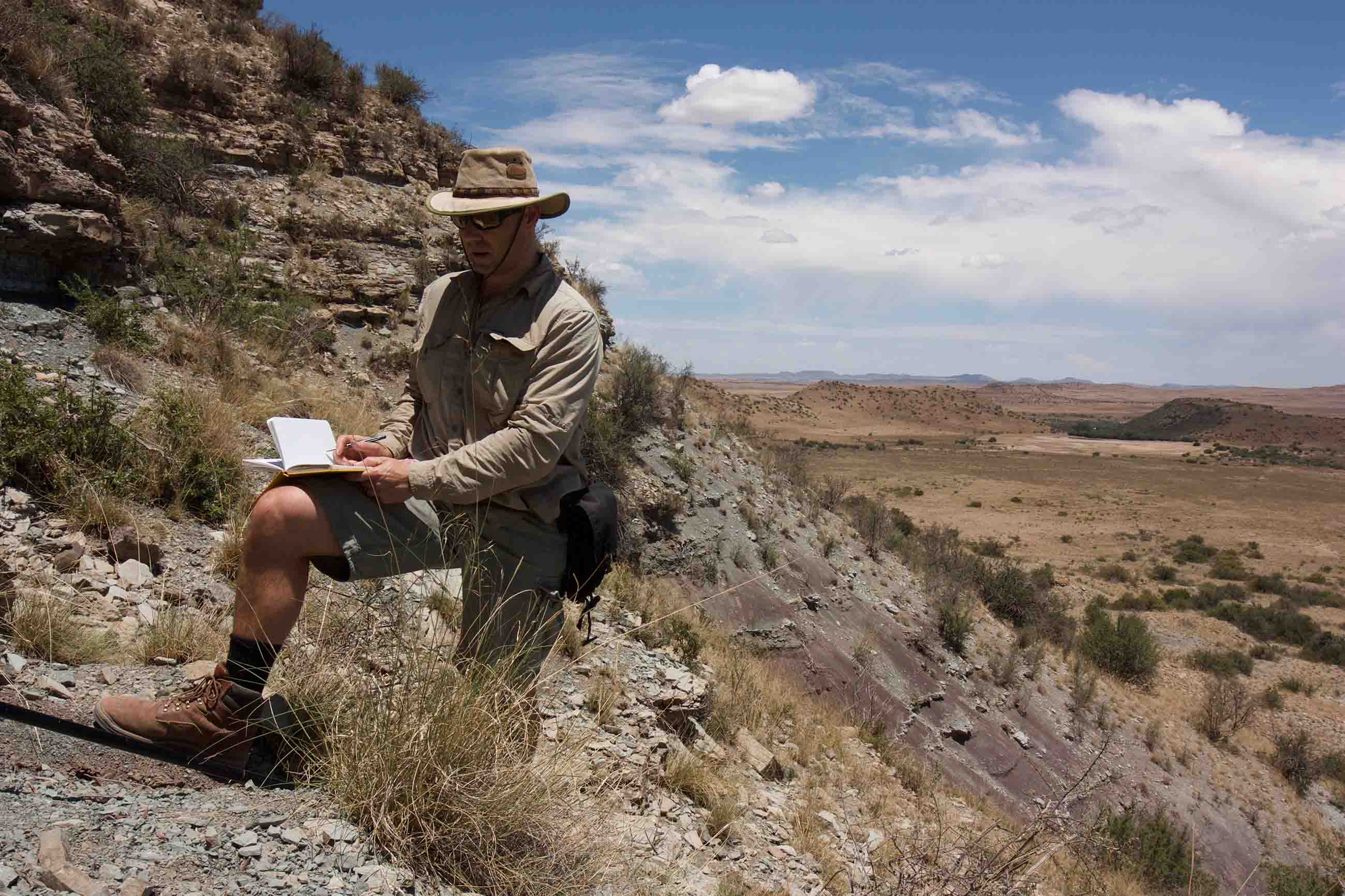
Toward the end of my days with the team, we drove to a large rocky mound that sat by itself in the middle of a valley. A skinny windmill with only one blade left stood spinning near where we parked the pickups. We hiked to the mound, and at its front, like a hidden opening to a pyramid, was a small dry creek with a familiar sight: grape soda-colored rocks. We were close to the boundary, and the team set out in search of ash.
It seems a strange thing that a chance volcano erupting somewhere on this side of the planet a quarter-billion years ago — and far from Siberia — could be, if researchers find its ashfall, the main clue that reveals the extinction’s timing and what was behind it. If that clue emerges, that is when comparing the past with the present can begin, or not begin at all.
“If the marine and continental biota collapsed simultaneously, or even a little out of phase with each other, we need to know if that model is true,” Gastaldo says. And detecting if it is true or not, he explains, is the only way we can envision what might happen in our own time. “I live on land. I’m concerned about what happens to where I live.”
The team worked, and the sky soon became grey. Then the booming of thunder came, like drums rumbling from underground. We hurried to the pickups, and heavy raindrops fell as we drove. I got out to close a cattle gate, and I gazed back as clouds — silver and grey with sudden veins of lightning — came upon us like some kind of encroaching doom.
Lucas Joel is a freelance science writer based in Ann Arbor, Michigan. His work has appeared in Scientific American, Earth magazine, New Scientist, and Science magazine, among other publications.










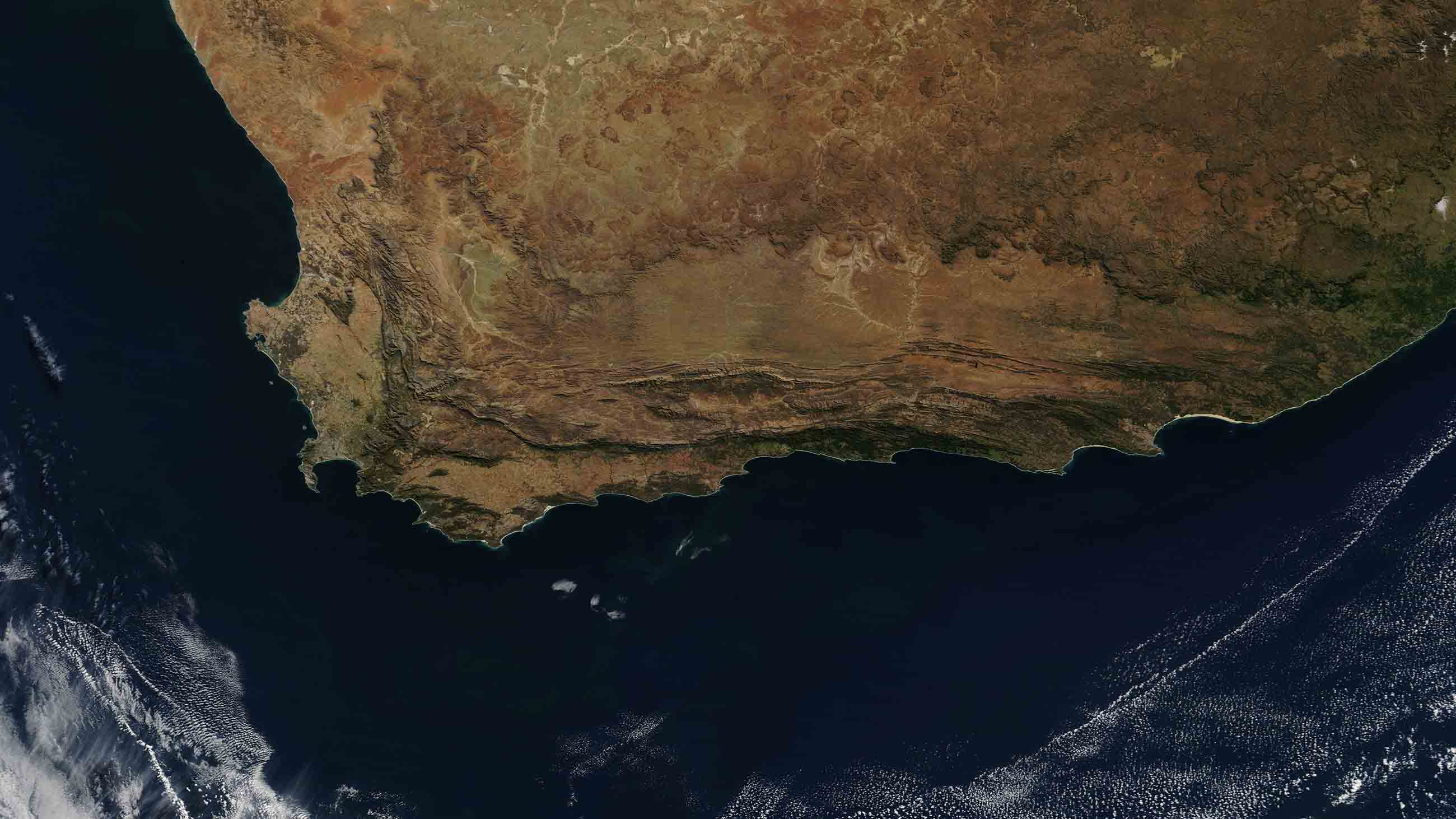
Comments are automatically closed one year after article publication. Archived comments are below.
Many comments ASSUME that what is taught is defined truth. If you want to search for truth, be open minded, logical, and humble.
Ancient philosophers, historians and writers if taken seriously can shed some light on this problem. In more recent times, open minded searchers like Ignatius Donnelly and Immanuel Velikovsky seem to be closer to the truth with every new discovery we find by observation. Their works are difficult to wade through but reveal unsurpassed logical studies, researches and multi-disciplined academic skills. Some of their most violent detractors, having more power than good sense, have squelched a lot of their works without a suitable hearing by reading their works before denouncing them.
Here are few things to keep in mind for serious researchers.
1.) Truth means that which is and not what one wants it to be.
2.) To discard information contrary to current theories, without proof is not science.
3.) Assumptions cannot be relied upon and require proof in light of all latest observations. If you can’t follow or pursue the veracity of an assumption, don’t use it as a basis of your thinking.
4.) Don’t assume that you are a better thinker than others that you may despise for some reason or another, including longevity.
5.) Don’t assume that the ancient philosophers were less capable than the modern. Detailed thinking is time consuming. The ancients didn’t have TV, radio, newspapers, cell phones, Facebook and GOOGLE, email to take up all their real thinking time. The observation of the universe as a whole were not obscured by night lights and other distractions. If what they observed and wrote about still has meaning, there is a good reason to look into it further.
how does the mass extinction, PT, compare time wise to the last known flip of the poles? It would seem plausible that a sudden reversal would have dramatic effects on climate and life on the planet. Even a slow reversal could have the same effects.
Is there a valid way to compare the impact on atmospheric CO2 levels of man’s current contribution with, say, current volcanic activity?
Dinosaurs had not yet evolved at the time of this extinction.
“a meteorite large enough to increase Earth’s mass at the point that the gravity made finding their food”
unfortunately a meteorite that size would essentially resurface the planetary surface with lava, being hundreds if not thousands of times the size of the object that took out the dinosaurs. There is an infamous video which demonstrates the impact of an object the size of Ceres (about 600 miles across) which is many times smaller than Mercury.
basically everything gets reset to the beginning of life on earth.
it’s possible certainly.
As long as the added mass was roughly equal to the mass of Mercury. You’d basically have to add the mass of a sixth of the earth or more to affect gravity that much.
So really, the math doesn’t seem like that’s anything close to plausible.
Maybe the quarter-billion years old rocks was a meteorite large enough to increase Earth’s mass at the point that the gravity made finding their food difficult for big terrestrial animals like dinos.